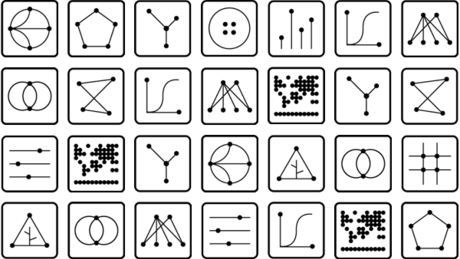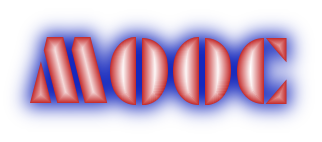
A recent article titled "
What Do Forbes, NYT, And Sotheby’s Have In Common? They Make Online Courses" states that "There are now a number of non-education-focused organizations and individuals offering MOOCs on the major platforms." They use as examples
World Bank,
PwC, and
Fundação Lemann offerings on Coursera, and
Microsoft, the
Association of Chartered Certified Accountants, and the
Inter-American Development Bank courses on edX. Google offers an
Android Basics Nanodegree on Udacity. These are massive online courses, but are they MOOCs?
With a few exceptions, many of these courses are more MOC than MOOC. It is accidentally appropriate that the former can be pronounced "mock" as in "not authentic or real, but without the intention to deceive."
The "O" that is missing is OPEN.
Clearly those corporate offerings are "Courses" and are "Online." The definition of "Massive" varies. Certainly we mean much larger than a face-to-face class (which could have several hundred in a lecture hall) or a traditional online course. I would probably say 1000 to 100,000 students is massive (and there are examples that exceed 100K).
For me, the "Open" part of the MOOC is the most important part. I guess I am a purist and having taught and taken MOOCs even before the acronym came in common usage, I cling to that original vision.
I was a learner and facilitator (student and teacher seem inaccurate) in courses offered by Peer to Peer University
p2pu.org which began in 2009 as a community-centered project. It uses a volunteer network and governance model.
They champion openness which enables participation, replication, and accountability. We strive to use openly-licensed learning materials and always share our methodology and resources openly, so that as many people as possible can take leverage our work.
Openness in a MOOC means four things to me. It is open to everyone - no prerequisites - and access to the resources (videos, notes, documents, images etc.) should be free of cost (but other things, like being able to ask direct questions to the teacher, the correction of the activities, or obtaining a certificate, grade or credit at the end of the course may have an economic cost). Open also often means that it does not make use of a closed learning platform (LMS). The resources might be hosted, as they were in the earliest MOOCs, in different places like websites, blogs, wikis, or multimedia repositories. Open should also mean that the course tries as much as possible to use open content, and it is offered with the intent that it can be reused by others.
These qualities of openness are certainly not true of the vast majority of things offered today as a MOOC . What I will call a MOC is what the most successful companies, such as Coursera or Udacity, are offering.
Profit is not always an ugly word. Let them make a profit if they can. And, yes, they do still offer some course free of cost, but let us not call them "open."
Things have evolved quite a ways from the "
Connectivism and Connective Knowledge" course created by educators
Stephen Downes and
George Siemens. When they offered free access to their for-credit course at the University of Manitoba, Canada, it got tagged a the first MOOC. Their course is still there, but a lot has changed.
 d on Coursera and it combines research with a MOOC. Students will be given an opportunity to work on specific research projects under the leadership of prominent bioinformatics scientists from different countries, who have agreed to interact and mentor their respective teams. The goal of the course according to Pevzner is "to make you fall in love with bioinformatics."
d on Coursera and it combines research with a MOOC. Students will be given an opportunity to work on specific research projects under the leadership of prominent bioinformatics scientists from different countries, who have agreed to interact and mentor their respective teams. The goal of the course according to Pevzner is "to make you fall in love with bioinformatics." Jane Hart created the Centre for Learning and Performance Technologies (
Jane Hart created the Centre for Learning and Performance Technologies ( A member of my
A member of my 